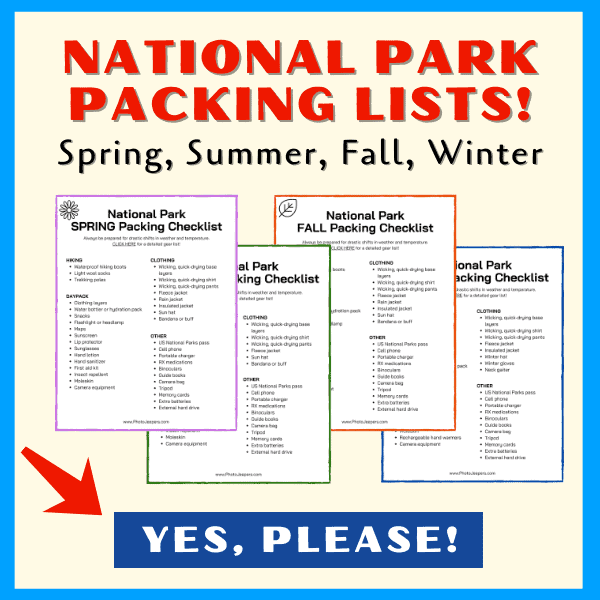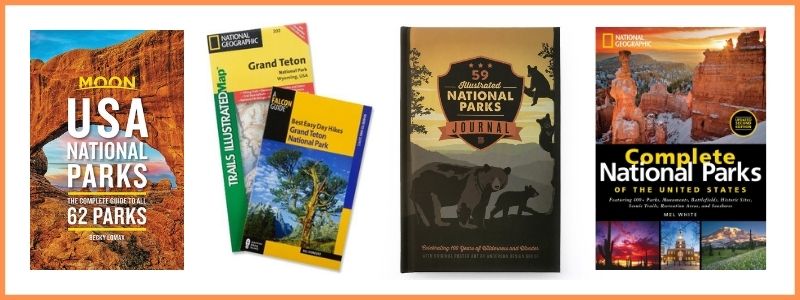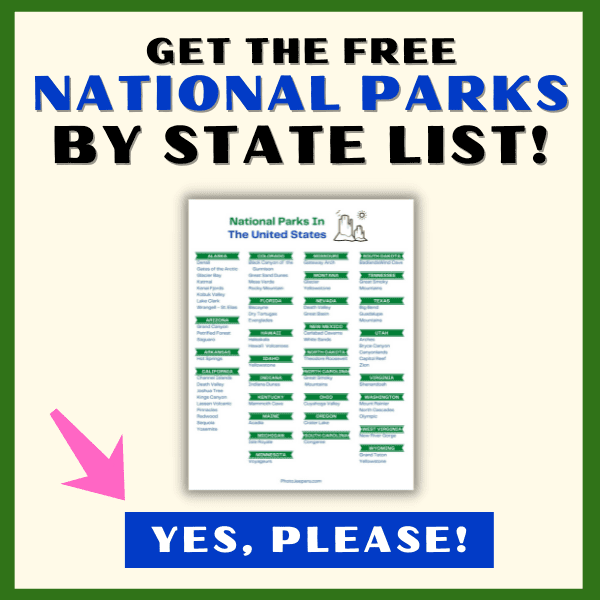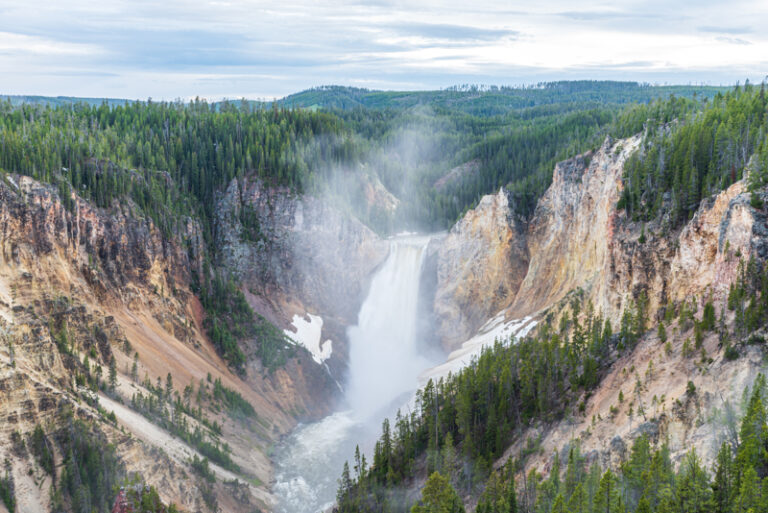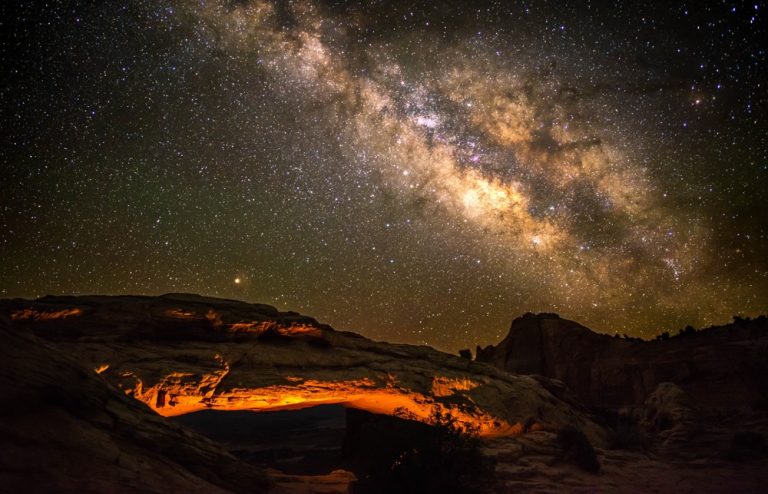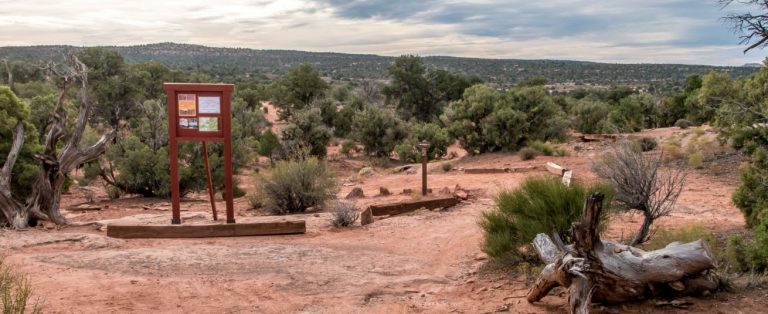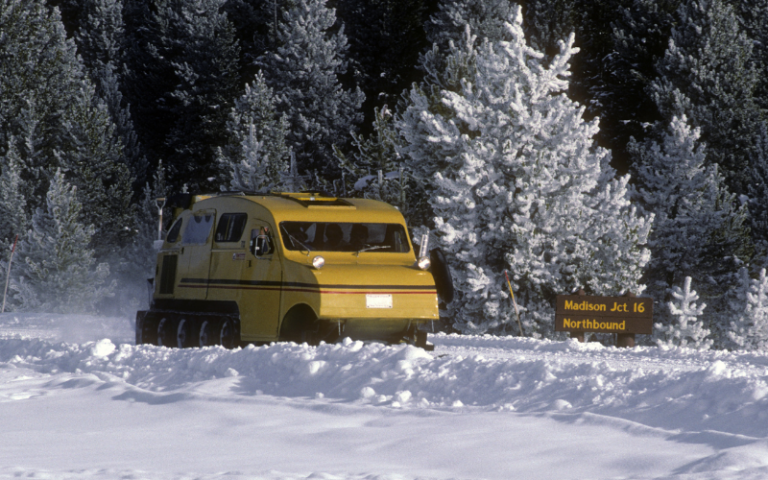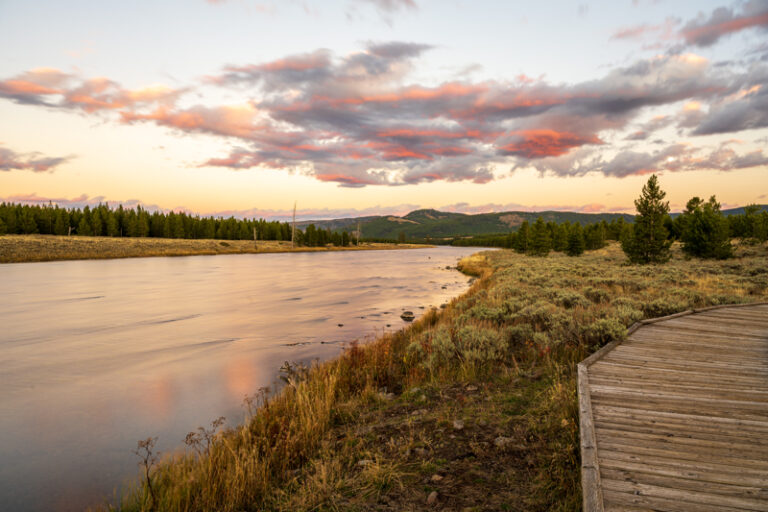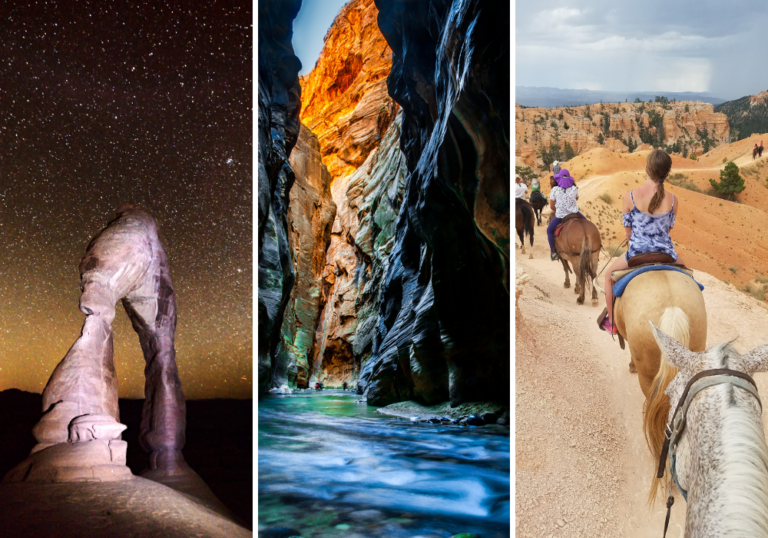US Southwest National Parks in the Summer
The Southwest region of the United States is home to some of the most breathtaking national parks in the country. When visiting the US Southwest National Parks in the Summer you can enjoy hiking, camping, kayaking, scenic drives, and more!
Check out these US National Park vacation ideas in the American Southwest: guides, tips, activities, and packing checklists to help you plan your summer vacation.
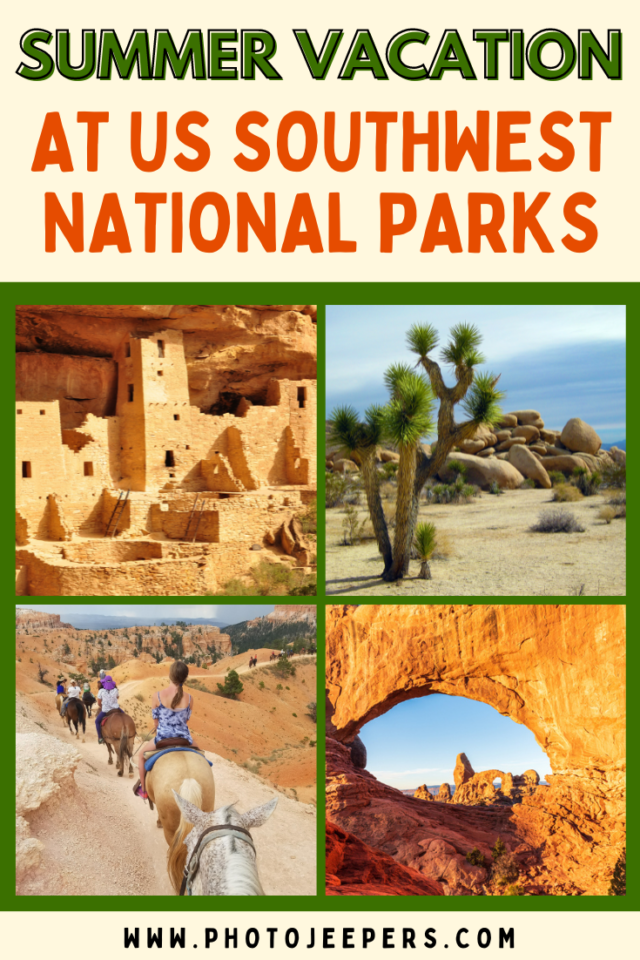
Whether you’re looking for a relaxing weekend getaway or an adventurous outdoor experience, there’s something for everyone at one of our southwest national parks during the summer months!
Summer in the Southwest US is usually hot and dry. Temperatures can reach up to 100 degrees Fahrenheit or higher, and humidity levels are low. And late summer monsoons can cause flash floods so it’s important to be prepared!
Use our Summer Packing List for National Parks to make sure you have the right clothing and gear for visiting this time of year! Grab your free printable packing checklist by clicking the image below!
This site contains affiliate links which means WE may receive commissions for purchases made through these links. We only provide links to products we actually use and/or wholeheartedly recommend! As an Amazon Associate, we earn from qualifying purchases. Read the full Disclosure Policy.
Summer Gear for Southwest National Parks
The National Parks in the Southwest will be hot and dry during the summer months! It’s important to stay hydrated and use sun protection for outdoor activities.
- UV Clothing: Loose-fitting, light-colored, UV protective wicking clothing is recommended for summer hiking.
- Sunhat: Sun protection is a must!
- Darn Tough hiking socks: Do not wear cotton socks. Darn Tough Socks are comfortable, breathe well, and prevent blisters!
- Sturdy hiking shoes: Hiking shoes or boots should be sturdy with good tread and traction.
- Water: Carry and drink at least two liters of water. Use refillable water bottles or hydration packs. We carry Propel powder packets to add to our water to help replace electrolytes.
- Sunscreen: Apply sunscreen to all exposed skin! Due to the dry heat in the Southwest you’ll also want lip balm and lotion!
- First aid kit: No matter whether your hike is long or short, always pack a hiking first aid kit. Make sure your first aid kit has the essentials like plasters, bandages, anti-bacterial wipes, etc.
- Headlamps: If you’ll be hiking in the morning or late afternoon, carry a headlamp so you’re prepared in case you need to hike in the dark.
- Snacks: Pack salty and easy to digest snack to replace electrolytes.
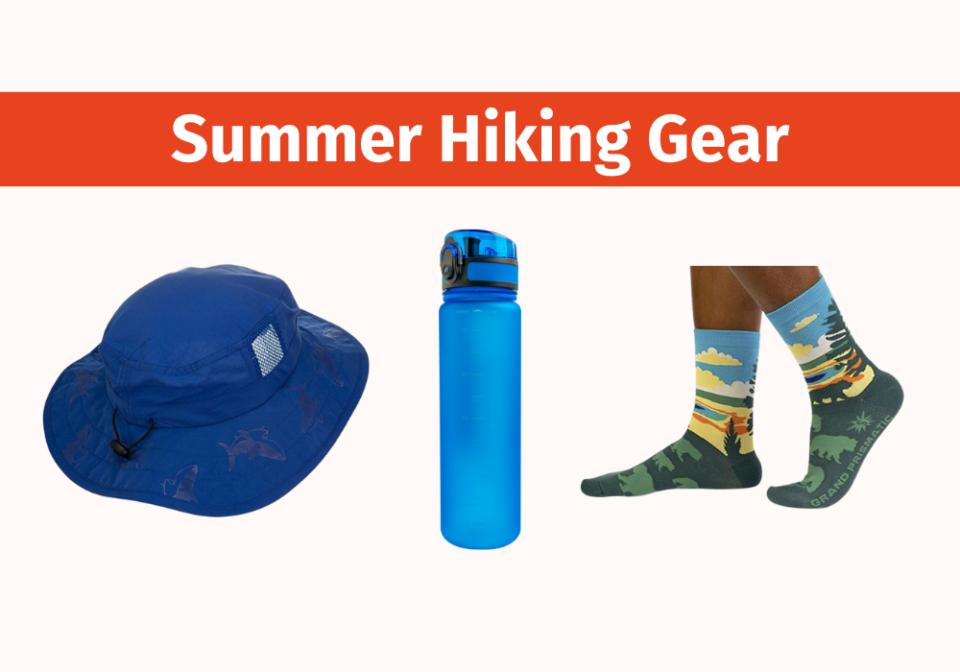
US Southwest National Parks in the Summer
We have teamed with other travelers to provide this list of Southwest National Parks to visit in the summer in these states: Arizona, Southern California, Southern Colorado, New Mexico, Texas, and Utah.
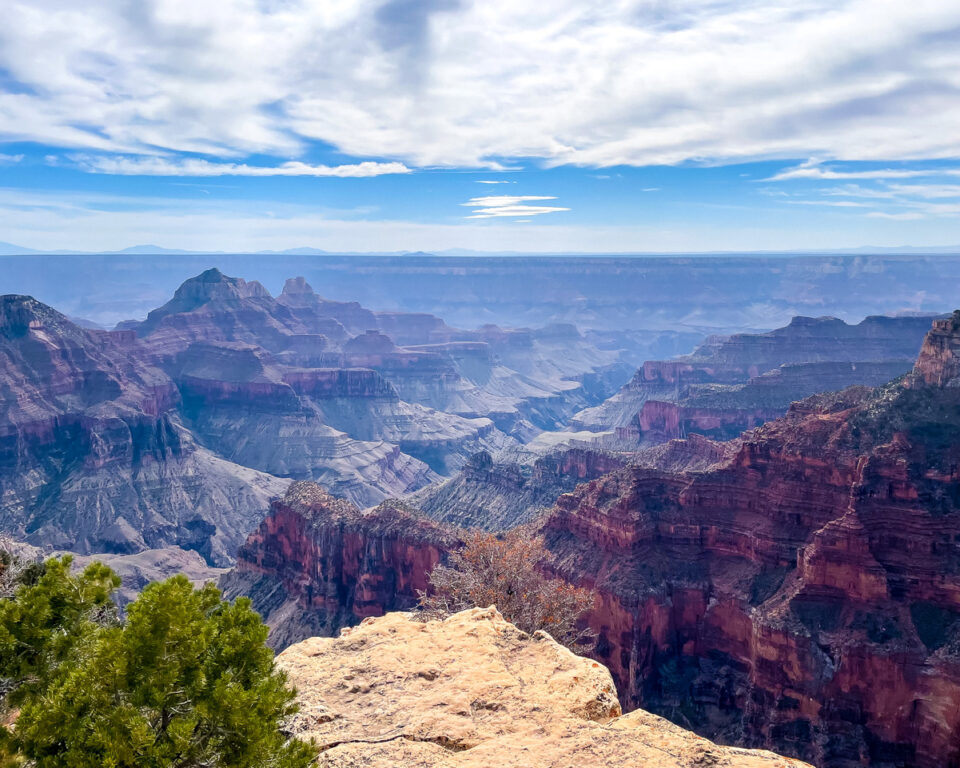
Arizona National Parks in the Summer
Arizona is home to some of the most beautiful national parks in the United States. From the iconic Grand Canyon to the stunning Monument Valley, there are plenty of places to explore and experience nature.
Grand Canyon National Park in the Summer
The Grand Canyon in Arizona is a popular US national park any time of year, but it’s especially fun to visit in the summer when the kitschier side of the local tourism industry that supports the park is going at full speed.
You can beat the heat by arriving as early in the day as possible. If you’re only going to spend one day at the Grand Canyon, then consider starting early in the morning. If you have more time, you could split your visit into two early mornings and spend your afternoons exploring Flagstaff and the other local Grand Canyon towns.
There’s a lot to do at the Grand Canyon for every type of traveler. Those looking for some adventure can go on one of the park’s many hikes, especially those located on the canyon’s north rim.
If you’d prefer to enjoy the park without hiking, there are many viewpoints to experience as well as scenic drives to take in. (Article and Photo by Stephanie, History Fan Girl)
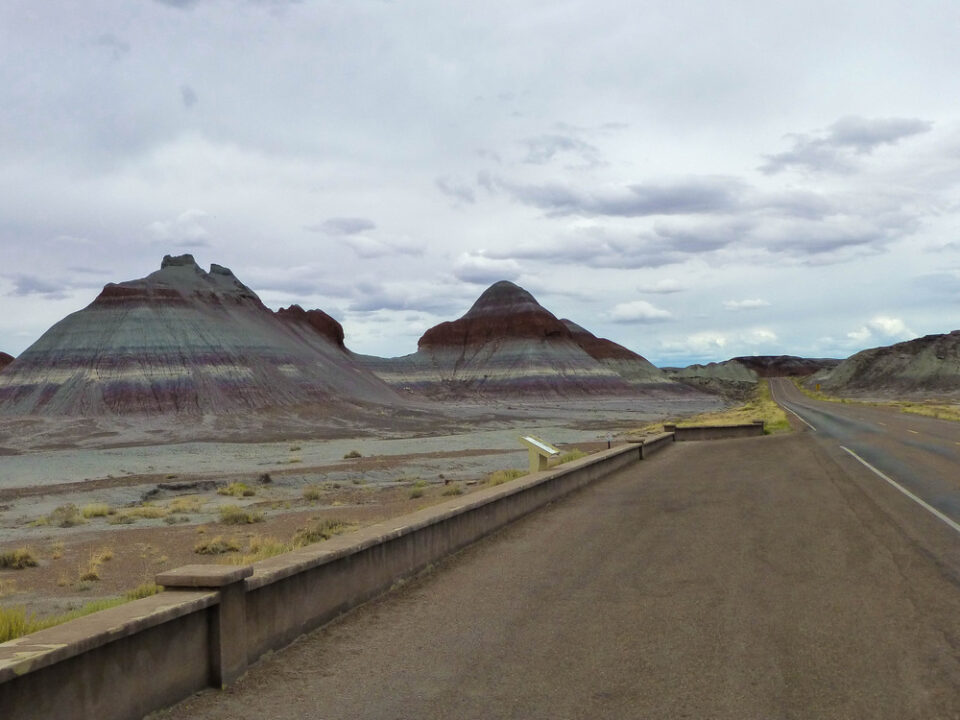
Petrified Forest National Park in the Summer
The Petrified Forest National Park in the east of Arizona is extremely arid and visiting in the summer can bring some challenges when the weather is hot. It’s recommended to visit when overcast where it’s much more pleasant, or explore early or late in the day.
With lots of trails to explore it’s perfect for those wishing to hike in the area – although in summer it’s worth heading out early if you do want to walk. The park opens from 8am so plenty of time to do a short hike before it gets too warm.
Those who don’t want to walk much can still enjoy the park from an air conditioned car as the road takes you around all the main things to see. There are many overlooks where you can pull over to see the amazing vistas, the old Painted Desert Inn and even an abandoned car on what was old Route 66 as it went through Arizona. Look for the petrified logs strewn around as well – some are huge!
If the weather is extremely hot then you’ll want to find some shade indoors – head to the visitor center at the entrance for food options or the Rainbow Forest museum where you can learn more about the ancient wood. (Article and Photo by Kirsty, Lost on Route 66)
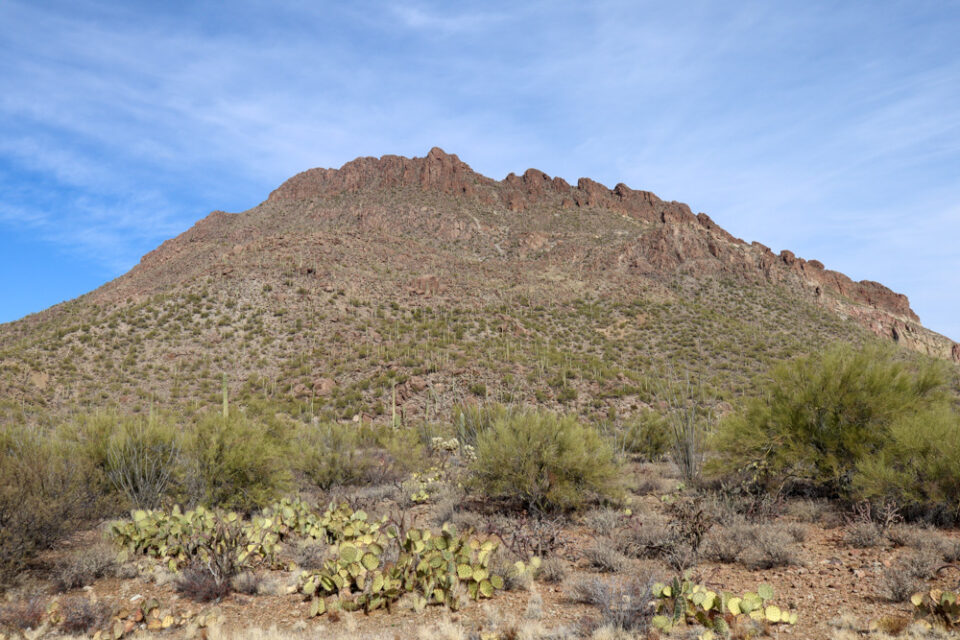
Saguaro National Park in the Summer
A summer vacation in Saguaro National Park is an adventure you will never forget. The desert heat creates a unique and vibrant landscape, with cacti standing guard around every corner.
But be warned – the temperature can get quite extreme during peak daylight hours, often reaching 100°F. So it’s best to plan your hikes for the early morning after the night air has cooled the desert. The bonus of hiking early is you can enjoy a fantastic Southwest sunrise.
After finishing your hike by mid-morning, spend the rest of your day driving the scenic loops located in either district of the park. Or venture into the visitor center to look at the exhibits and chat with the rangers.
Mid-summer can bring monsoon rains, so don’t hit the trails if bad weather is predicted, as conditions can make hiking dangerous.
But the rains also bring beautiful summer wildflowers and the occasional waterfall within the park.
Summer provides fewer crowds as it is low season in Saguaro National Park, so you will have even the most popular trails nearly to yourself. And if you want to visit while the famous Saguaro cacti are in bloom, early June is your best bet. (Article and Photo by Jenny, Traveling in Focus)
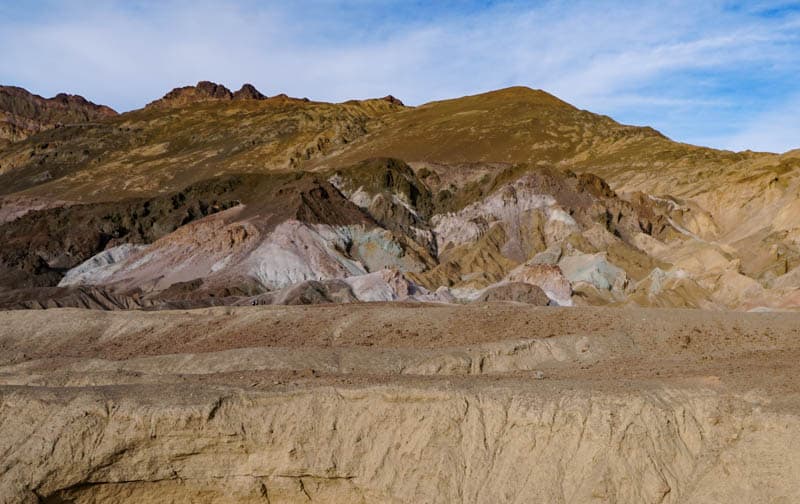
California National Parks in the Summer
There are fun things to do in the summer at National Parks in Southern California.
Death Valley National Park in the Summer
Death Valley National Park in Southern California is a magnificent desert park you have to visit. It’s known for the hottest ever temperature recorded on earth, and daytime temperatures can routinely get into the triple digits through the summer months.
You can visit Death Valley in the summer, despite the intense heat, if you spend most of your time in the park inside your air-conditioned vehicle. The park is eminently drivable, with many scenic viewpoints and overlooks, where you can get out briefly to enjoy the views and snap photos.
Start your sightseeing as early in the day as you can, so you are at your first destination in the park just before the sun rises. Zabriskie Point is an excellent place to watch the sun rise, its light bathing the badlands in a golden glow. Mesquite Flat Sand Dunes, Dante’s View, and Artist’s Drive are other areas to enjoy.
Do not plan any low elevation hikes at Death Valley in the summer! Bring, and drink, plenty of water and sports drinks, wear sun protection, be sure your vehicle is in good shape, and stay on paved roads and close to your vehicle. (Article and Photo by Dhara, Roadtripping California)
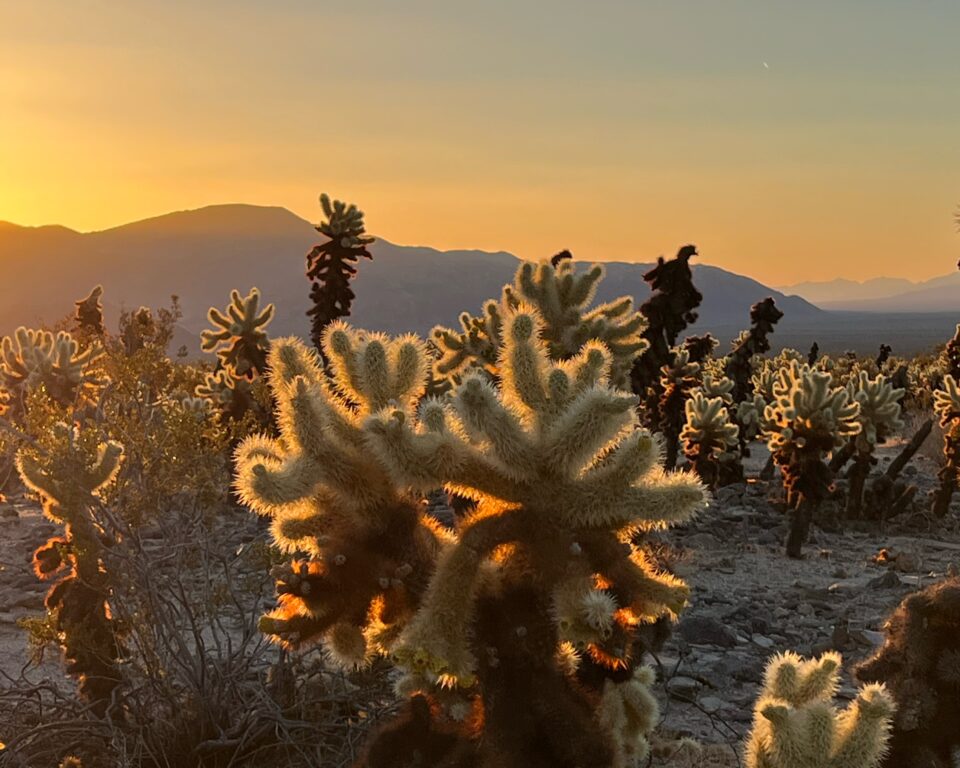
Joshua Tree National Park in the Summer
Joshua Tree National Park is home to a breathtaking desert landscape characterized by massive boulder formations, Joshua trees, and rugged mountains. Peak tourist season is March and April, because it’s extremely hot during the summer. It’s still possible to see this incredible park in the summer however, you simply need to make some accommodations for the heat.
It’s best to get out early, when it’s still dark outside. Joshua Tree is a world-famous mega center for star gazing and also hosts some of the best sunrises. The cacti of the Cholla Cactus Garden are even more magical just as the sun is coming up, outlining their spines like a halo.
It’s a good idea to choose short hikes or attractions you can see from your car, and to hike early in the morning when it’s cooler and return to a/c in between hikes. Skull rock and Heart Rock for example, are each less than 1.5 miles round-trip. You can also take in the epic desert landscapes and see scores of Joshua trees simply by driving around.
You’ll need to plan ahead, as time is more limited. But seeing the desert as it wakes up is an unforgettably beautiful experience. (Article and Photo by Tammi, Wander Healthy)
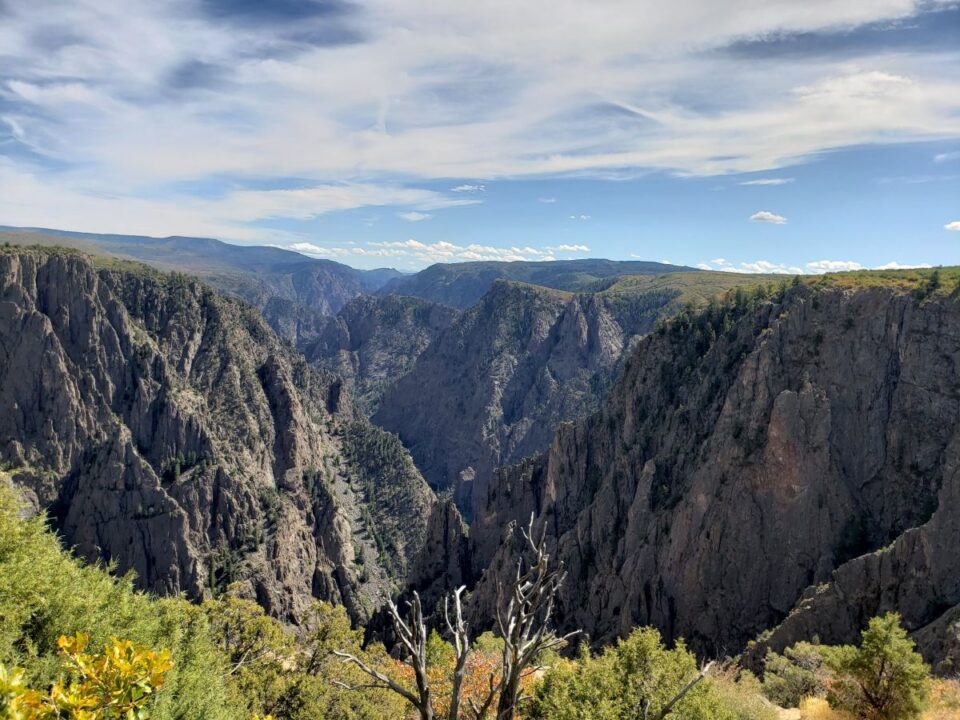
Colorado National Parks in the Summer
Whether you’re looking for a weekend getaway or a longer vacation, Colorado’s national parks have something for everyone.
Black Canyon of the Gunnison in the Summer
Black Canyon of the Gunnison is an amazing park to visit, and the perfect national park to visit in the summer. Located in the southwestern part of Colorado, this park is about 5 hours south of Denver. The weather in the Black Canyon in June through August is typically around 80°F during the day with a constant breeze blowing through the canyon. And as a somewhat lesser-known park, the typical summer crowds are almost nonexistent in Black Canyon National Park.
Also, the high mountain passes and hiking trails will all be open and ready to explore! And one of the best parts of this park is the fact that you can drive through Black Canyon of the Gunnison, stopping at the jaw-dropping overlooks and sheer cliff drop-offs. The park contains the highest vertical cliff in Colorado and the picturesque landscapes seen from 8,300 feet in elevation are stunning.
During the summer months a popular thing to do in Black Canyon is to take one of the many trails along the canyon rim, or get a permit to hike the unmarked “wilderness routes” leading down into the canyon by the river. Another popular summer activity is river rafting down the Colorado River, which is accessible nearby at the Gunnison Gorge. (Article and Photo by Erin, Super Simple Salty Life)
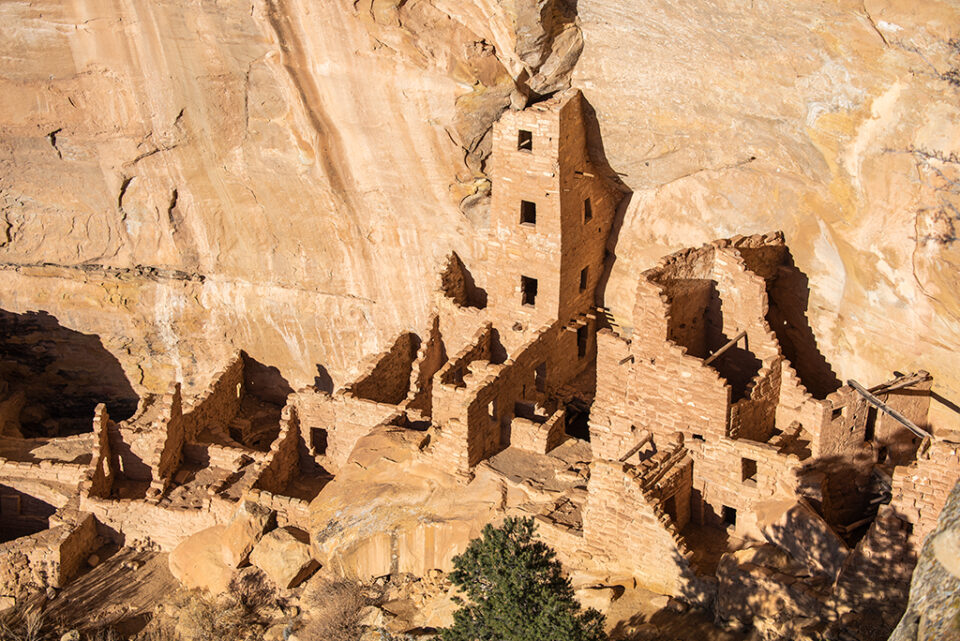
Mesa Verde National Park in the Summer
Mesa Verde National Park is a stunning archeological heritage site in Montezuma County, Colorado. It preserves 5,000 known archaeological sites, including 600 cliff dwellings of the Ancestral Puebloan people. They lived here for over 700 years, from 600 to 1300 CE. Park offers a spectacular look into the ancient lives of America’s First Peoples, and it’s also on a list of UNESCO World Heritage Sites.
Some archeological sites and parts of the roads are closed during winter. So the best time for visiting Mesa Verde is summer. You must be on a ticketed tour with a ranger to enter all cliff dwellings. The guided tours are from May 14 through October 21.
However, there are more things to do in Mesa Verde National Park that you can experience on your own. Start your trip from Mesa Verde Visitor and Research Center to take a map and see exhibitions. Take Mesa Top Loop Road and admire Square Tower House Overlook and views of Cliff Palace from Sun Point View and Sun Temple. Visit Wetherill Mesa and Step House. Hiking is also a great idea in Mesa Verde. Knife Edge Trail, Petroglyph Point Trail, and Spruce Canyon Trail are the best hiking trails.
As summer temperatures reach 90-100F, wear sun-protected clothes and a hat, and drink plenty of water. It’s a great idea to pack some electrolytes. Pack also raincoats, as in July and August afternoon thunderstorms may occur. (Article and Photo by Agnes, The Van Escape)
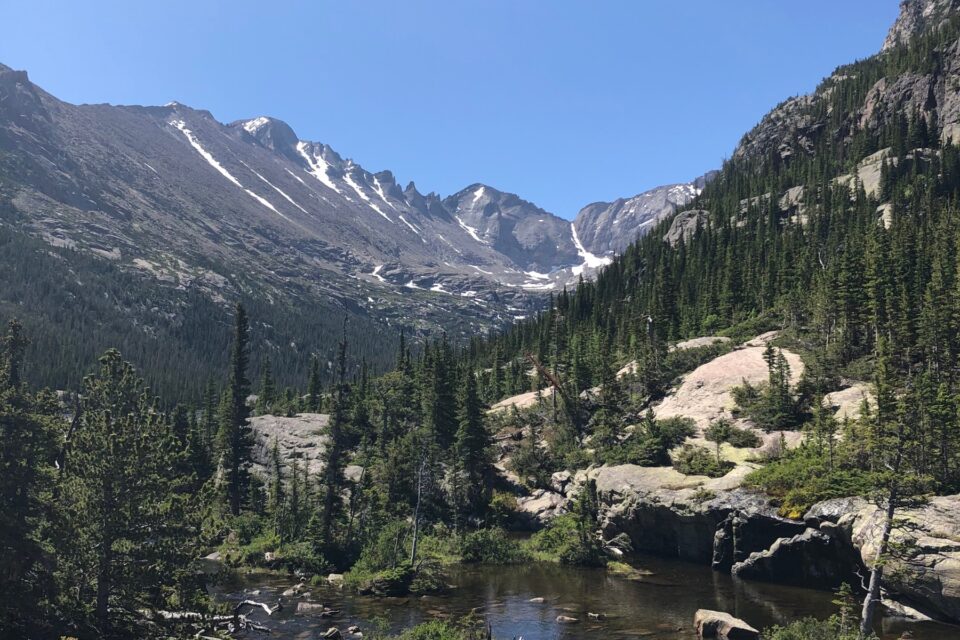
Rocky Mountain National Park in the Summer
One of the best Southwest National Parks to visit in the summer is the Rocky Mountains located in Colorado. Whether you spend 1 day in Rocky Mountain National Park or several days, there are a variety of activities that you can like hiking and fishing in this majestic park.
Hiking is one of the most popular activities in Rocky Mountain National Park and people come from all over to explore the miles of trails and take in the breathtaking views.
You can hike up to Alberta Falls from Bear Lake Trailhead, which is a 30-foot waterfall that pours into Glacier Creek. You can also hike to one of the stunning lakes in the park like Emerald Lake, Dream Lake, or Nymph Lake with some sections of the trail having moderate elevation gain and rocky areas.
Fishing is another popular activity in Rocky Mountain National Park during the summer months as it has over 150 lakes, creeks, and rivers filled with Rainbow trout, Cutthroat, Brown, and Brook trout. The best lake for fishing is Mills Lake as the trail is less traveled and the waters are quiet.
There are no entry reservations for Rocky Mountain National Park. But it is highly recommended that you park in the Park&Ride Lot and take the park shuttle to Bear Lake Trailhead since it can get crowded.
Be sure to check the weather before you go. The month of June is known to have afternoon showers and you want to be back under the treeline before 1 pm if rain is forecasted. (Article and Photo by Pafoua, Her Wanderful World)
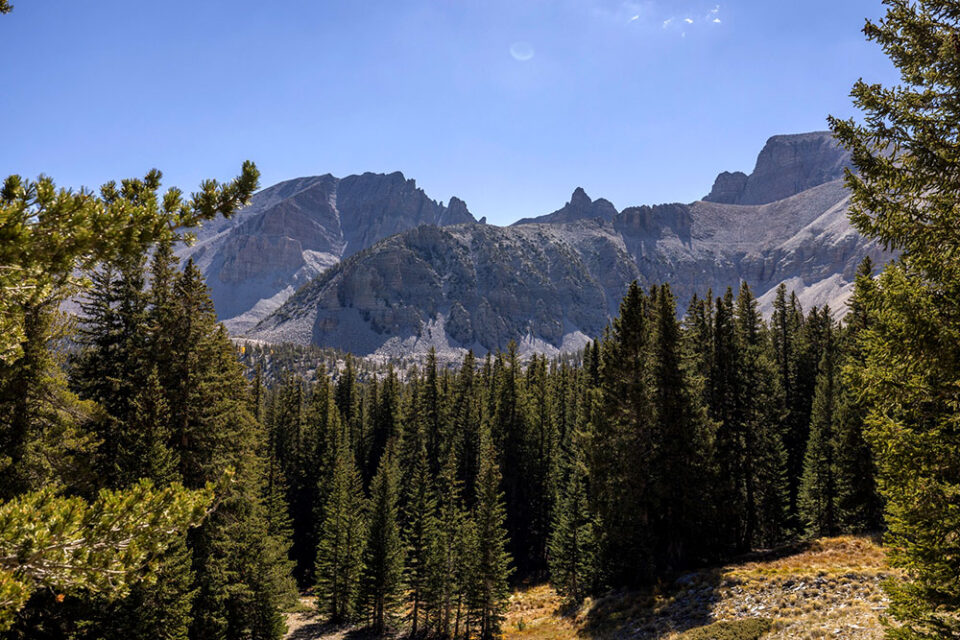
Nevada National Park in the Summer
The summer is an amazing time to visit Nevada’s National Park, Great Basin!
Great Basin National Park in the Summer
Summertime is the best season to explore Great Basin National Park. During June, temperatures are pleasantly mild all day long – around 10:30 AM it was 48F and it stayed below 60F for most of the afternoon. Only a 4 ½ hour drive from Las Vegas, Great Basin National Park is a perfect way to escape the heat on your next Las Vegas adventure.
Great Basin National Park is free to enter and explore however, if you choose to go on one of the Lehman Cave Tours fees range from $4 for children up to $15 for adults. Here are our picks for our favorite things to do at Great Basin National Park.
Lehman Cave Tours: Great Basin is home to over 41,000 acres of Karst, a landscape filled with exquisite caves. The most famous of these is Lehman Cave, a two mile long structure with various speleothems, streams, and areas of perennial ice.
Mount Wheeler Summit: Mount Wheeler offers incredible panoramic views of the surrounding areas and is an excellent spot for a family photo. The Challenger Point trail takes visitors to the summit and is a great way for kids to learn about glaciers and the local ecosystem.
Hiking Trails: Great Basin has over 30 miles of trails that range from easy walking to long day hikes. For families with younger children, the Lower Lehman Creek Trail is the perfect choice as it is only 2.6 miles long and is relatively flat.
Experienced hikers will be excited to know they can trek up the 13,063 ft. Wheeler Peak or take the 10.2 mile Guinevere Canyon Trail. Take in the beautiful landscapes of Great Basin National Park on horseback. Pegasus Ridge Charters offers guided tours in the area, so you’ll get to gallop along the trails.
Great Basin National Park has something for everyone! From exploring the Lehman Caves to horseback riding and rock climbing, there’s no shortage of things to do and see. Whether you’re looking for a relaxing family vacation or some thrilling adventures, Great Basin is the perfect place to create unforgettable memories with your loved ones. (Article and Photo by Shannon, Three Days in Vegas)
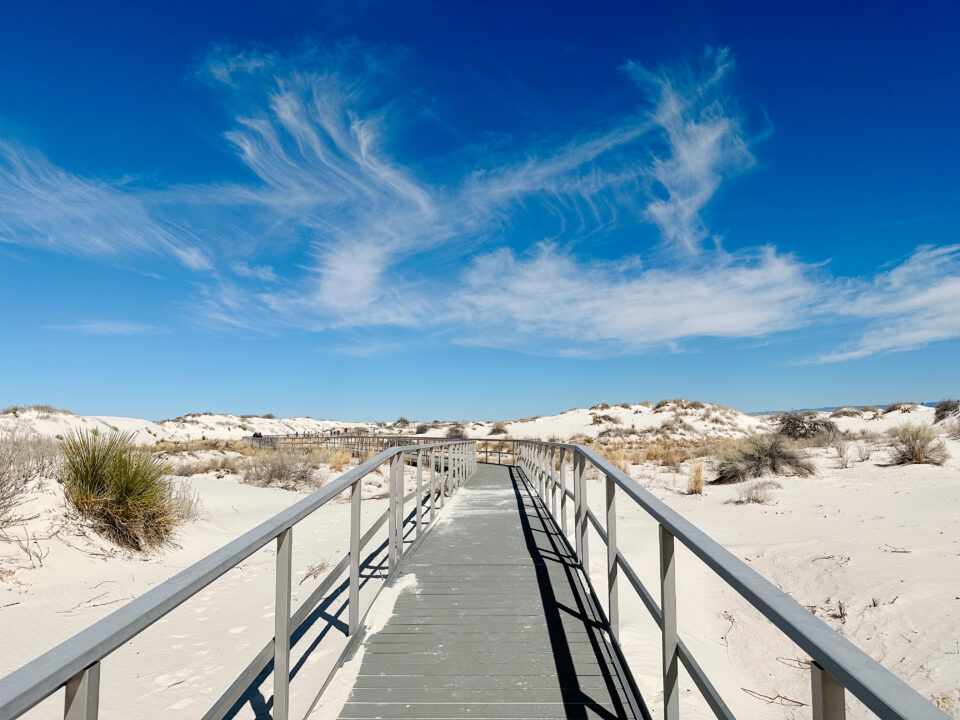
New Mexico National Park in the Summer
Whether you’re looking for an outdoor adventure or a peaceful retreat, New Mexico’s national parks have something for everyone. So come and discover the beauty and history that await you in these amazing natural areas!
White Sands National Park in the Summer
White Sands National Park is a wonderful national park to visit in the summer. In the south-central part of New Mexico, it’s one of the most enjoyable places to visit in the southwest US.
There are so many things to do in White Sands National Park. Spend time in the white, gypsum sand, sledding down the dunes at Alkali Flats. Or, if you make reservations, you can join a ranger-lead hike or plan an elaborate picnic at the group-use site.
White Sands National Park does not offer an inter-park shuttle, but you can enjoy the beauty of the park in your own vehicle with a scenic drive. Hikers will enjoy the likes of Playa Trail, Dune Life Trail, and many more.
Keep in mind that this park is located in the desert and attention to the weather is important when visiting. Average high temperatures in the summer are near 100 degrees Fahrenheit, so be sure to bring sunscreen, hats, and lots of water.
Monsoons brought on by sudden storms are also possible in this season, so be sure to check the weather forecast before visiting to avoid any weather-related safety concerns. (Article and Photo by Candice, CS Ginger)
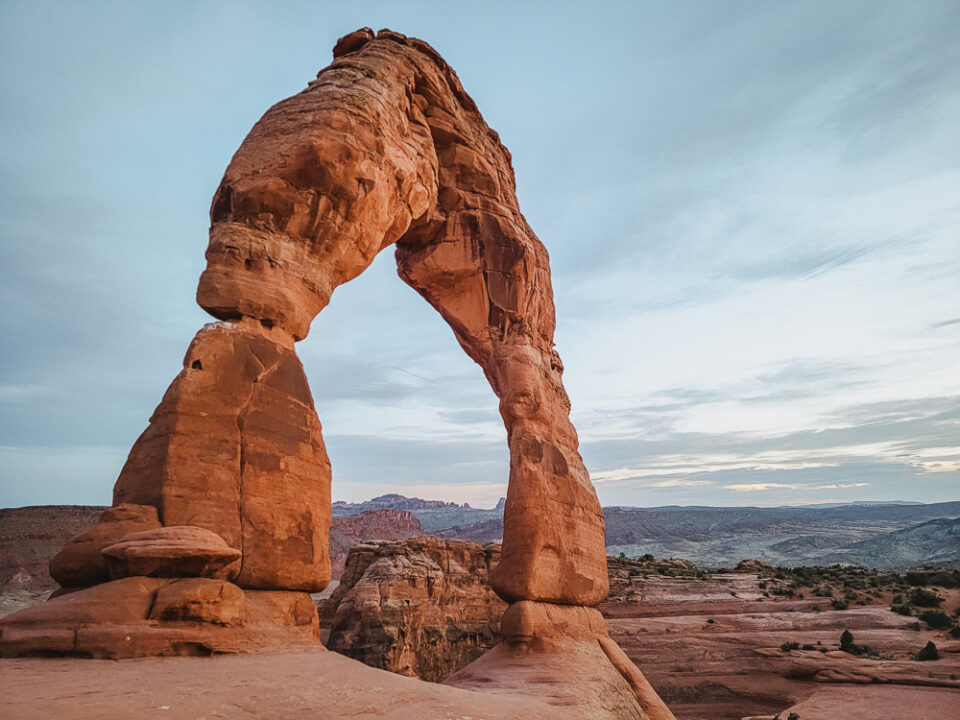
Utah National Parks in the Summer
Visiting Utah National Parks in the summer is a popular time for most people. As you’re looking for places to visit in Utah, definitely add a national park to your summer vacation list.
Arches National Park in the Summer
Despite the intense heat of southern Utah, Arches National Park is a great place to visit in summer, and with a little strategy, you can have a great day in the park. Arches does require timed reservations to enter the park between 7am-4pm, and these reservations sell out weeks in advance in the summer. However, this isn’t actually a huge deal, because I would highly recommend entering the park in time for sunrise at Arches National Park and to get in some hikes before the heat sets in.
Early morning is actually quite pleasant, and you can do some of the best hikes in Arches before the heat sets in, and then after 7pm when the heat starts abating. Some of these hikes would include Park Avenue, Delicate Arch, Devil’s Garden, and Tower Arch.
During the middle of the day you can visit some of the viewpoints or do the super short (<0.5 miles) hikes, such as to Sand Dune Arch, Double Arch, Balance Rock, or the Windows. Watch out for late summer monsoons, which can create strong storms, winds, and rain, and can lead to flash floods. (Article and photo by Stephanie, The Unknown Enthusiast)
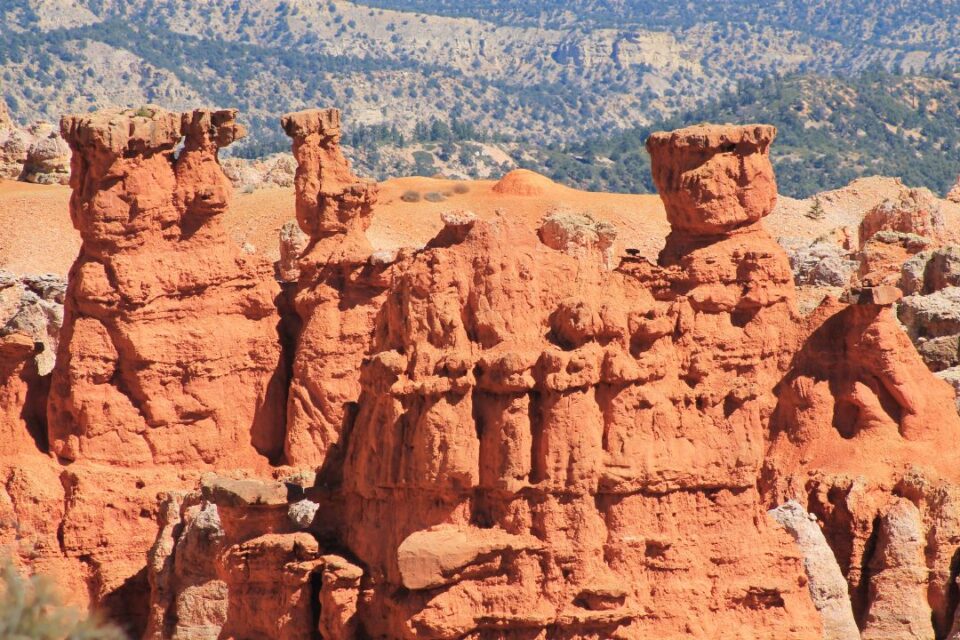
Bryce Canyon National Park in the Summer
Bryce Canyon National Park is one of the most remarkable national parks in the USA. It’s famous for its unique & gorgeous natural rock formations called hoodoos. More than 1.5 million tourists flock here yearly to witness these vibrant structures.
Summer presents pleasant weather since the park is at a high elevation. Days are warm and sunny, while the nights are cool. You can expect brief afternoon thunderstorms. Having said that, you must check the weather forecast before you plan a visit.
As you might expect, summer is the busiest time of the year. So you brace yourself for crowds. I recommend getting into the park at the crack of dawn. It allows you to explore the park without crowds and saves you from the summer heat. As a bonus, you witness the most spectacular sunrise over Bryce Amphitheater.
You can opt to walk the park or board a free park shuttle. It runs the entire summer throughout the Bryce Amphitheater. You can get off and get on wherever whenever you want.
From Bryce Canyon National Park summer hikes (Rim Trail & Queen’s Navajo Combination Loop Trail are the most famous), biking, and horseback riding to ranger-led programs, driving the 18-mile scenic loop, stargazing, and of course, enjoying awe-inspiring views – there’s so much to see and do at Bryce Canyon during summer.
Whatever you plan to do at Bryce, start your exploration from the visitor center for a perfect head start. Remember to pack a light jacket for cooler early mornings and evenings, a rain jacket to survive the occasional storms, sunglasses, a hat, sunscreen, and a water bottle to combat the heat. (Article and Photo by Anjali, Travel Melodies)
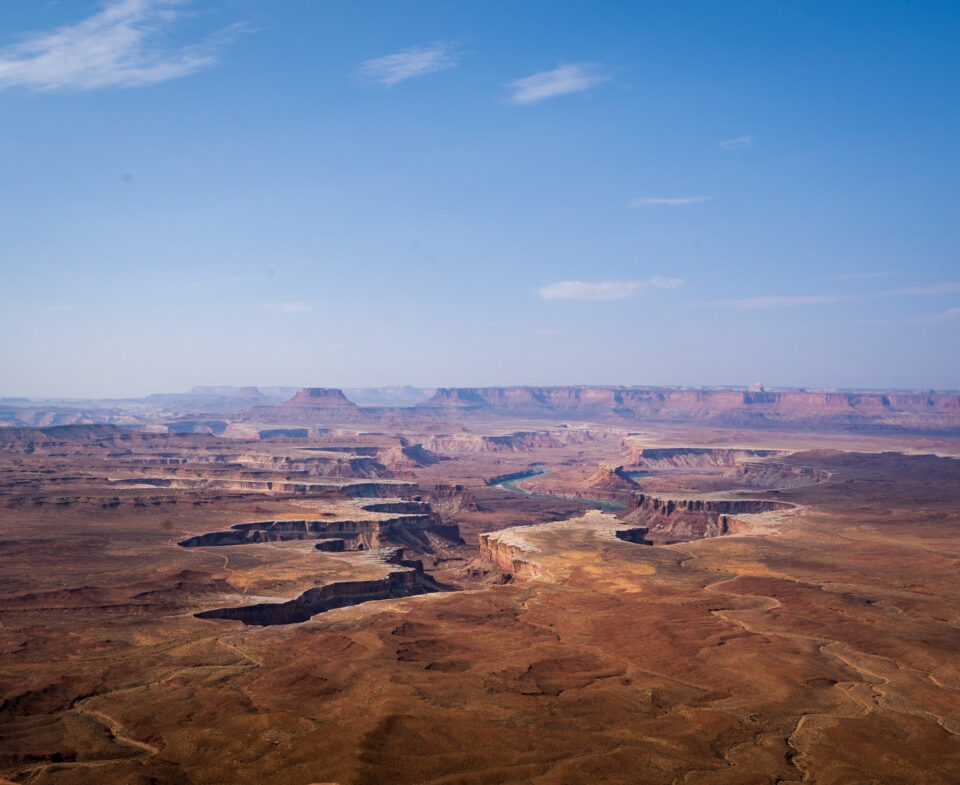
Canyonlands National Park in the Summer
Canyonlands National Park, known for its soaring mesas and deep canyons, is a wonderful place to visit. But, come summer, it can see temperatures soaring over 100 degrees during the day.
There’s still plenty of ways to enjoy the park during this period. For example, many of its most popular trails, like Mesa Arch, are easy for most hikers and can be managed, even in the heat, with good sun protection and lots of water. For more challenging hikes, like Chesler Park, wake up super early to beat the heat and bring way more water than you anticipate needing.
On particularly hot days, you can enjoy one of Canyonlands’ most popular activities- driving to the overlooks along the Island in the Sky scenic drive! Cruise from viewpoint to viewpoint, like the Grand View Point or Green River Overlooks, and blast the A.C. once you get back in your car!
Alternatively, there’s a number of outfitters in Moab that will take you white water rafting on the Colorado River, while enjoying views of the canyon walls stretching up thousands of feet above. It’s a unique perspective of the park that most visitors won’t get to see- plus, you’ll definitely cool down while splashing around in the chilly river water! (Article and Photo by Jessica, Uprooted Traveler)
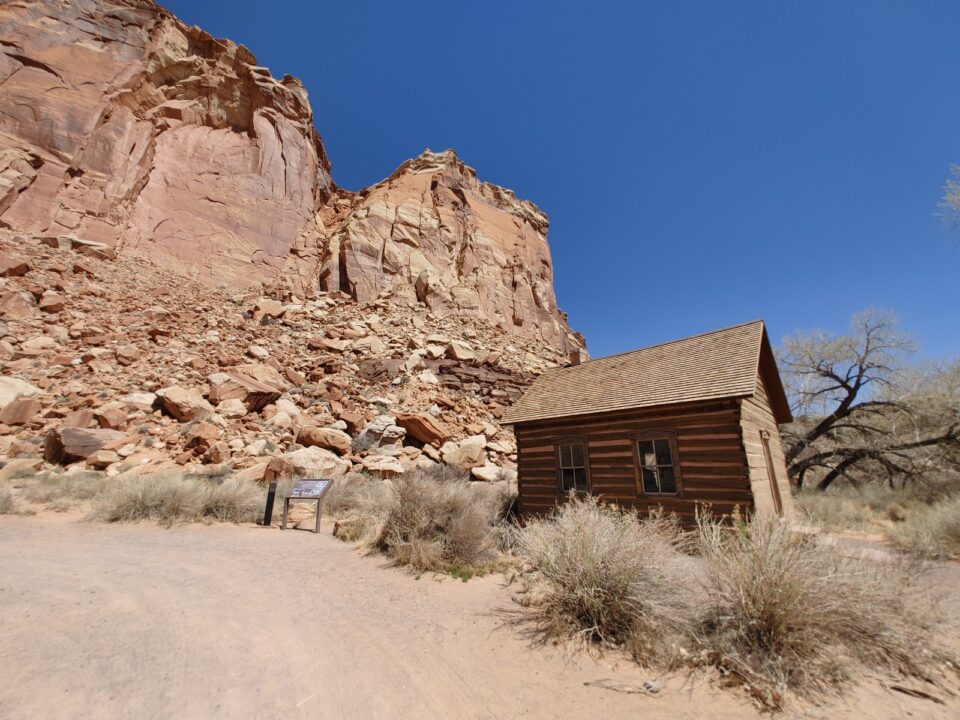
Capitol Reef National Park in the Summer
Capitol Reef National Park, located in South-Central Utah, offers visitors a variety of unique landscapes, sites, and outdoor activities. Capitol Reef features rock formations with layers of golden sandstones, layered rock formations, and monoliths. Visitors to the park can enjoy towering cliffs, petroglyphs, canyons, and natural bridges along the Capitol Reef scenic drive and many hikes.
For those looking for a relaxing experience with stunning views, enjoy the 7.9-mile paved scenic drive that contains plenty of pullouts. For those looking to get face-to-face with the park’s nature choose from the 15 hiking trails the park offers. View petroglyphs carved into the rock formations along a boardwalk that is easily accessible from a parking area and explore the remains of Fruita, one of the park’s early settlements.
A visit to Capitol Reef National Park in the summer will see very warm temperatures, with average highs between 80 and 90 °F. Since summertime can also be a very busy time to visit the park, visiting in the early morning hours can help you avoid both the highest temperatures and the crowds.
Despite the heat and crowds, summertime is a great time to visit as visitors can pick fruit from the park’s orchards, a favorite Capitol Reef National Park activity! Beginning in early June, visitors can pick cherries, followed by Apricots in late June, and Peaches and Pears in August.
Reservations and timed entry tickets are not required to enter Capitol Reef National Park. There is also no entrance fee unless you intend to drive the 7.9-mile scenic drive, which has a $20 per vehicle fee. The park does not offer a shuttle service, so arriving by personal vehicle is the best way to visit. (Article and Photo by Melissa, Navigation Junkie)
Zion National Park in the Summer
Zion National Park in Utah is a breathtaking sight and one of the best parks to explore during the summer. The park features a variety of stunning red-rock formations, majestic canyon walls, lush greenery and the winding Virgin River. Entrance fee is $35 per vehicle or $20 per person.
The park is easy to explore as there’s a free shuttle that takes you through the park, where you can hop on and hop off at 9 different stops. There is also a shuttle that serves the town of Springdale (which is where to stay in Zion) and drops you off at the entrance to the park, thus you won’t have to worry about parking.
Two of the best Zion National Park summer hikes are Angel’s Landing and the Narrows. Angel’s Landing is a strenuous hike with steep switchbacks, sheer cliff drops and narrow ridge lines. Angel’s Landing now requires a permit to ascend up the chains.
Temperatures in the summer months are typically hot and dry, which is why hiking the Narrows will be one of your favorite activities. This infamous hike is a 16-mile slot canyon takes you along the Virgin River with towering walls. Taking a dip in the water is the best way to cool off. (Article and Photo by Jess, I’m Jess Traveling)

